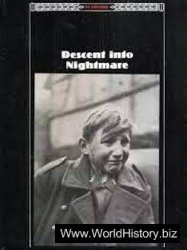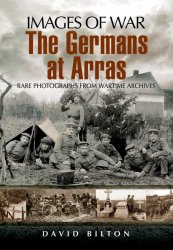Business continues in 1994-2000, during which years Bob Magill becomes president. Revenues of $6 million are generated in 1996.
WORLD WIDE AIRLINES: United States (1956-1962). WWAis established at Miami (MIA) on January 1, 1956, to provide nonscheduled Douglas DC-3 passenger charters to destinations in the Caribbean. These flights continue until 1959, when the company is transferred to California.
The reformed and relocated company begins operating all-cargo services from Oakland with three Curtiss C-46 Commandos. The carrier soon moves again, to Burbank Airport, and applies for a supplemental certificate from the U. S. CAB. When this requested is refused in October 1962, WWA shuts down.
WORLD WIDE AIRWAYS, LTD.: Canada (1945-1966). World Wide is established in 1945 to offer lightplane charter flights to various destinations within Quebec. During the early 1950s, the company bids upon and wins several contracts to provide support service for those constructing the DEW Line across northern and central Canada.
The first service is provided by a former RCAF Lancaster bomber, acquired in 1952 and outfitted to transport fuel. The tanker crashes and is lost while landing at the construction site at Menihek on June 28, 1953.
In order to fulfill new building support obligations, the carrier next acquires three Curtiss C-46s in 1955, followed by four more plus four Douglas DC-3s in 1956. Among these are one of each type registered to newly acquired Montreal Air Service, Ltd.
Two Curtisses are lost in landing accidents, one in a repairable incident on March 25. The second C-46D is lost at DEW Line Site 28 on September 23; although the aircraft must be written off, there are again no fatalities.
A DC-3 is also involved in a landing accident on May 5, 1957, but it can be repaired. It is replaced by another Douglas transport late in the year. In 1958, a DC-3 is sold to Canadian Aircraft Renters.
Following their removal from service, the Canadair C-4 North Stars of Trans Canada Airlines, Ltd. are put up for sale and in 1961 World Wide purchases two, along with a former RCAF C-54 (military DC-4). A North Star is sold to International Leases before the end of the year while the second is withdrawn from service at the end of 1962.
The same year, a C-46 is also sold. The last DC-3 is sold in 1963 and the C-54 is lost in a landing accident at Montreal on March 10, 1964.
The last two C-46s are sold in 1965, the year the carrier elects to concentrate on the provision of long-haul charters. To carry out the holiday work, two Lockheed L-1049Gs are purchased from Qantas Empire Airways (Pty.), Ltd. while one each L-1049C and L-1049H are acquired under lease from subsidiary Montreal Air Services, Ltd. The L-1049C is found to be in such poor repair that it is withdrawn from service before year’s end and is employed for spare parts. Traffic from the charter business is insufficient and in the face of safety concerns, the carrier ceases operations in August 1966 after its license is revoked.
Founder Donald M. McVicar remembers his company years later in his Through Cuba to Oblivion (Dorval Station, Que.: Ad Astra Books, 1994).
WORLDWAY AIRLINES, LTD. (WORLDWAYS CANADA, LTD.): Canada (1975-1991). Roy T. Moore forms Worldways as a charter operation in April 1975, becoming president and CEO. A former Keating Aviation, Ltd. ice patrol Douglas DC-4 is acquired to undertake all-cargo services. Two Gates Learjet 35s and a Hawker Siddeley HS 125-3A are purchased in April and May 1976 for the introduction of executive charters. During the latter month, a Convair CV-640 is obtained from Pacific Western Airlines, Ltd. (PWA) and employed to replace the passenger charters into southern Ontario previously provided by Great Lakes Airlines, Ltd. The HS 125 and a Learjet 35 are withdrawn in July 1977.
The DC-4 is sold in February 1978 and replaced by a second CV-640 added in May. Contract service operations are also performed for the Canadian government and such private organizations as the National Hockey League. ALearjet 25 is acquired in July, but sold in April 1979, only to be replaced by a Learjet 35A in December.
Beginning in late fall 1980, the Convairs and Learjets undertake trans-Canada cargo flights for Loomis Couriers, Ltd. After the failure of Ontario Worldair, Ltd. in December, the subsidiary Worldways Canada, Ltd. is formed to undertake long-haul charters from Toronto.
An ex-Ontario Worldair, Ltd. Boeing 707-338C is purchased in early June 1981 and employed on the 21st of that month to inaugurate long-distance charter service from Toronto to Terciera in the Azores. A B-707-365C is acquired from British Caledonian Airways, Ltd. in November and employed in December to begin a long series of winter charters to Venezuela.
A second BCAL B-707-338C is purchased for spare parts in January 1982. By March, Worldways is heavily into the inclusive-tour field. Destinations visited from Toronto include Prestwick, Dublin, Shannon, Belfast, Helsinki, Zagreb, Skopje, and Oslo. Flights are also undertaken from Montreal to Paris and Athens and from Vancouver to Amsterdam. One of the CV-640s is leased to Petrocan for the summer, but in the fall, both Convairs are sold to Cleveland-based Wright Airlines.
Early in 1983, four Douglas DC-8-63s are purchased from CP Air, Ltd. The first is delivered in March, followed by the others in May and June. Their receipt allows sale of the two B-707-338Cs to the Royal Australian Air Force in May. Meanwhile, in April, the carrier begins flying the Calgary-based Lockheed L-382E Hercules freighter of Echo Bay Mines.
Air Niagra, Ltd.’s Convair CV-640 is leased for a year in April to undertake the Petrocan contract at St. John’s. New tour destinations added in the winter season include Edinburgh from Toronto, Copenhagen from Vancouver, and London and Amsterdam from Calgary or Vancouver.
During 1984, the DC-8-63s are overhauled in England. The first one finished is leased to Flugfelag Islands, H. F. (2)/Icelandair, which subleases it to Air Algeria, S. A. for the August Hadj pilgrimage service. The leased Air Niagra, Ltd. CV-640 is returned in May. The B-707-365C operates summer tourist flights from Vancouver to Copenhagen via Calgary. Unable to meet U. S. FAR 36 noise control standards, Worldways aircraft are now barred from American markets until they can do so. The Echo Bay Mines Hercules is purchased and resold in December to TransAmerica Airlines for $6.5 million.
In the spring of 1985, tour flights are undertaken from Vancouver to London and to Prestwick and Manchester. Two of the company’s DC-8-63s are now outfitted with hush kits, making them suitable for operation in U. S. airspace. Meanwhile, the company wins the government contract to overhaul all five Canadian Forces B-707 transports and leases to the government (complete with crew) the B-707-365C for use as a replacement for a year. Two Pacific Southwest Airlines (PSA) Lockheed L-1011-385 TriStars are acquired; the first is delivered in early August and undertakes a Toronto-London charter on August 29.
The second TriStar joins the fleet in September and both are modified in November to long-range L-1011-500 standard. New holiday destinations now visited include Santo Domingo, Puerto Vallarta, Cartagena, Bridgetown, Banjul, Acapulco, Montego Bay, Puerto Plata, and Barcelona. Charters into the U. S. resume from Toronto to St. Petersburg, Fort Lauderdale, Orlando, and Las Vegas.
Enplanements for the year total 450,000.
The B-707-365C is sold to Transbrazil, S. A. (Linhas Aereas Transbrazil) in February 1986. The Canadian Forces charter a DC-863 that makes nine overseas flights in February and March. In the spring, the carrier moves into a new technical facility in a twin-bay hangar at Toronto.
Vancouver to Copenhagen via Calgary charters are again flown during the summer and in the early fall the last two DC-8-63s are hush-kitted. During the year, a new training center, complete with a DC-8 simulator, is opened.
Passenger boardings during the 12 months jump 31.8% to 560,000.
The HS 125 acquired in June 1985 is sold in July 1987. Meanwhile, the summer tourist season features new stops at Brussels, Paris (ORY), Frankfurt, Munich, Vienna, Venice, Rome, Leeds/Bradford, Lisbon, Oporto, and Malaga. New winter destinations include Aruba, Holguin, La Paz, Margarita Island, and Santiago de Cuba. Enplanements in 1988 total 741,735.
In early 1989, two L-1011s are leased from the British Airways, Ltd. (2) charter subsidiary Caledonian Airways, Ltd. to fly tours for Regent Holidays; they are operated in Caledonian colors with Worldways titles. The planes are returned in April and May. A DC-8-63 is leased to Air Jamaica, Ltd. for 15 months, beginning in the summer; it is based at Toronto and flies to Jamaica weekdays.
Passenger boardings accelerate 27% to pass the million-mark in annual enplanements for the first time (1,016,074).
Unable to continue financially, this charter operator shuts down in August 1990. Management spends a year attempting to relocate resources that will allow the carrier to resume flying.
In October 1991, Worldways officials are denied permission to restart and the following month, the airline’s assets are liquidated and its aircraft placed in storage.




 World History
World History









